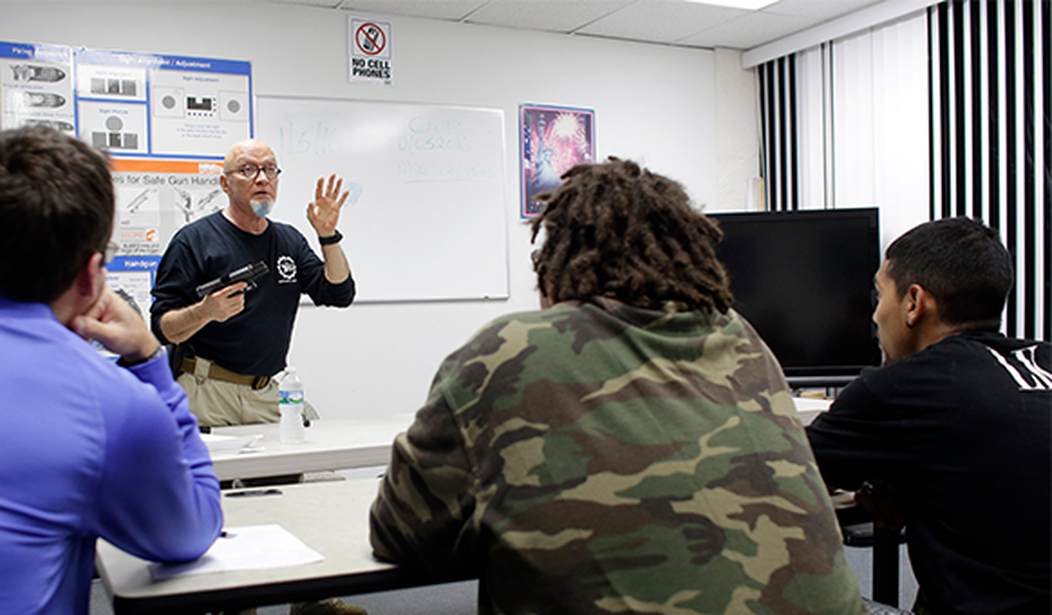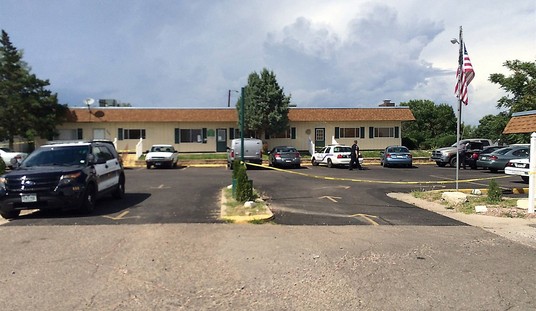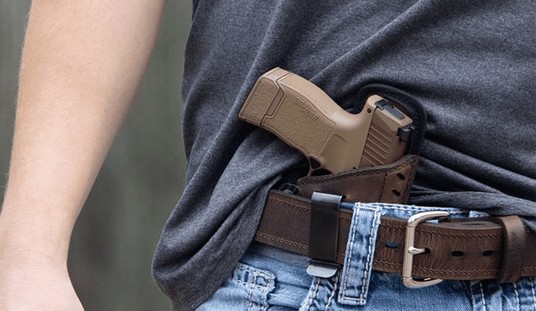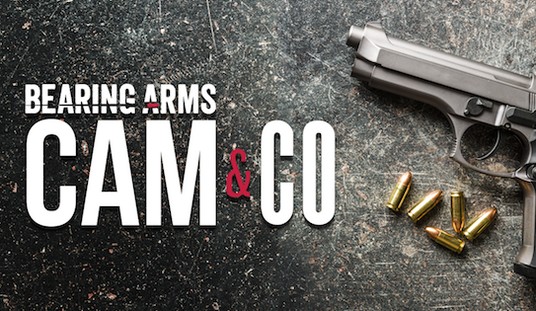Second Amendment organizations won a major victory in federal court on Friday as U.S. District Judge Katherine Menendez ruled that the state’s prohibition on lawful carrying by adults under the age of 21 is not in accordance with the history and tradition of the right to keep and bear arms.
The Biden-appointed judge granted a motion for summary judgement requested by the Minnesota Gun Owners Caucus, Second Amendment Foundation, Firearms Policy Coalition, and three Minnesota residents who sued seeking access to their right to carry, rejecting the state’s argument that adults younger than 21 aren’t a part of “the people” whose right to keep and bear arms shall not be infringed.
Defendants argue that the plain and ordinary meaning of “the people,” as understood at the time the Second and Fourteenth Amendments were adopted, would not have included persons under twenty-one, and adopting the Plaintiffs’ all-the-people reading too literally would lead to absurd results, such as allowing young children to publicly carry firearms. For the reasons that follow, the Court concludes that the Second Amendment’s plain text is better read to include adults 18 and older in its protections.
First, although it did not address the age-related issue before the Court in this case, Heller’s discussion of the normal and ordinary meaning of the phrase “the right of the people” places a thumb on the scale in favor of the Plaintiffs’ preferred interpretation. The Heller majority compared “the people” in the Second Amendment to the Constitution’s other references to the same or similar phrases, then explained that “the term unambiguously refers to all members of the political community, not an unspecified subset.”
… Neither Heller nor Bruen addressed the specific issue of whether the Second Amendment’s text protects the rights of 18-to-20-year-olds. But because the normal and ordinary meaning of “the people” includes all Americans who are a part of the national community, the right codified by the Amendment appears to include them.
Second, neither the Second Amendment’s text nor other provisions within the Bill of Rights include an age limit. However, the Founders placed age requirements elsewhere in the Constitution, including for eligibility to be a House Member, Senator, or the President.
… Third, the inclusion of “the people” elsewhere in the Bill of Rights supports the interpretation that the Second Amendment extends to individuals over the age of eighteen. The Supreme Court found meaning in the Constitution’s use of the same or a similar phrase as that used in the Second Amendment. Indeed, in considering the reach of the Second Amendment, the Heller Court considered the fact that both the First Amendment and the Fourth Amendment refer to a right belonging to “the people.” The First, of course, protects “the right of the people peaceably to assemble, and to petition the Government for a redress of grievances.” And the Fourth proscribes violations of the “right of the people to be secure in their persons, houses, papers, and effects, against unreasonable searches and seizures.” Although one can find certain limitations upon the rights of young people secured by both the First and Fourth Amendments, neither has been interpreted to exclude 18-to-20-year-olds from their protections.
Finally, founding era militia laws lend support to the understanding that “the people” referred to in the Second Amendment includes 18-to-20-year-olds.
… While some laws in the colonial period increased the “minimum age requirements for militia service to not include 18- to 20-year-olds,” the majority of pre-ratification and post-ratification militia laws suggest that persons between the ages of 18 and 20 were expected to supply their own weapons in connection with their militia service. Shortly after ratification of the Second Amendment, the Second Congress passed the Militia Act, ch. 33 § 1, 1 Stat. 271, which set the minimum age for membership in the militia at 18 and required each member to “equip himself with appropriate weaponry.” … Founding-era militia laws requiring service in the militia by 18–20-year-olds who are responsible for supplying their own weapons is consistent with a contemporary understanding that this age group was not excluded from the class of persons who had the right to keep and bear arms. And the fact that the Second Amendment itself discusses the “well regulated militia” means the age-range of militia laws is of particular relevance to the reach of its protections.
I have to say, it’s a surprisingly strong opinion from a Biden appointee; to the point that Menendez disagreed with the recent Eleventh Circuit decision in NRA v. Bondi upholding a ban on gun sales to adults under-21 by, in part, choosing 1868 and the Fourteenth Amendment as the more applicable time period in considering historic analogues. The post-Civil War period is slightly more favorable ground for gun control activists in terms of the number of local and state-level regulations that were in place, but as Menendez noted, the Supreme Court has strongly signaled that 1791 is the more appropriate time period to consider when weighing the constitutionality of a particular gun law.
in this Court’s view, Bondi declined to follow rather clear signs that the Supreme Court favors 1791 as the date for determining the historical snapshot of “the people” whose understanding of the Second Amendment matters. See Bruen, 142 S. Ct. at 2137 (“And we have generally assumed that the scope of the protection applicable to the Federal Government and States is pegged to the public understanding of the right when the Bill of Rights was adopted in 1791.”).
Bondi does not mention the Bruen Court’s warning to “guard against giving postenactment history more weight than it can rightly bear.” Bruen, 142 S. Ct. at 2136.
The Bruen majority made no small effort to distance itself from even Heller’s reliance on postenactment history except to the extent that such history was consistent with the founding-era public meaning. Bruen, 142 S. Ct. at 2136–37; see also Gamble v. United States, 139 S. Ct. 1960, 1975–76 (2019) (stating that Heller treated 19th century treatises “as mere confirmation of what the Court thought had already been established”).
And the Bruen Court further explained that “post-ratification adoption or acceptance of laws that are inconsistent with the original meaning of the constitutional text obviously cannot overcome or alter that text.” Heller, 670 F.3d at 1274, n.6 (Kavanaugh, J., dissenting). And Bondi’s conclusion is difficult to square with the Supreme Court’s emphasis on applying the Bill of Rights against the states and federal government according to the same standards.
Menendez did let her partisan leanings show by criticizing the Supreme Court’s rejection of any sort of interest-balancing test, noting that if she were allowed to consider the testimony of gun control proponents like Saul Cornell and Stanford professor John Donahue she would likely have upheld Minnesota’s carry ban for young adults.
If the Court were permitted to consider the value of these goals and how well Minnesota’s age requirement fits the ends to be achieved, the outcome here would likely be different. But whatever the evidence may reveal about the wisdom behind enacting a 21-year-old requirement for publicly carrying a handgun, such analysis belongs to a regime of means-end scrutiny scuttled by Bruen. Under Bruen, the balancing of interests in public safety and the right to keep and bear arms has already been “struck by the traditions of the American people.”
Second Amendment jurisprudence now focuses a lens entirely on the choices made in a very different time, by a very different American people. Given the relative dearth of firearms regulation from the most relevant period where that lens is aimed, the endeavor of applying Bruen seems likely to lead, generally, to more guns in the hands of more people, not just young adults.
Some Minnesotans are surely fine with that result. Others may wonder what public safety measures are left to be achieved through the political process where guns are concerned. But Bruen makes clear that today’s policy considerations play no role in an analytical framework that begins and ends more than two hundred years ago.
It’s clear by that passage that Menendez is no fan of the Bruen decision, but at least she didn’t let her personal opinion cloud her legal judgement. Minnesota failed to demonstrate that its carry ban fits within the historical tradition of the right to keep and bear arms, and that means it’s got to go.
While the judge’s order prohibiting the state from continuing to deprive under-21s their right to bear arms in self-defense did not come with any sort of stay attached, Minnesota A.G. Keith Ellison will undoubtably appeal the decision and seek a stay from the Eighth Circuit. Given the length of time that it typically takes to process a concealed carry license, under-21s may not see any immediate relief from Menendez’s order, but today’s decision is still very good news and a big step towards restoring the rights of all “the people” to keep and bear arms.









Join the conversation as a VIP Member